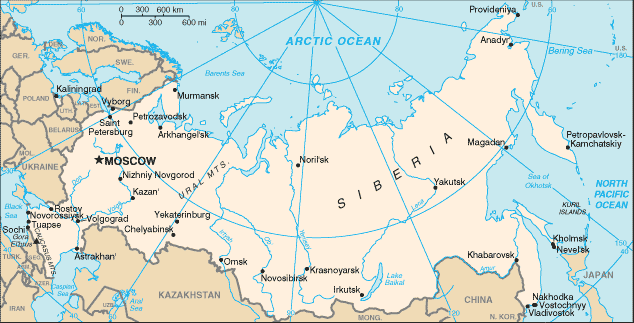By NewsDesk @bactiman63
A total of 59 cases of Crimean-Congo hemorrhagic fever (CCHF) have been detected in Russia since the beginning of this year, according to Natalya Pshenichnaya, deputy director for clinical and analytical work of the Central Research Institute of Epidemiology of Rospotrebnadzor.

Image/CIA
The occurrence of this disease is typical for the southern regions of Russia, according to Pshenichnaya. 49 cases of infection were detected in 2021.
“In these latitudes, favorable climatic conditions are formed for the habitat of ticks of the genus Hyalomma, the main carriers and reservoirs of infection, as well as for the replication of the virus in them, the causative agent of this infection,” says Natalya Pshenichnaya.
Crimean-Congo hemorrhagic fever is a widespread disease caused by a tick-borne virus (Nairovirus) of the Bunyaviridae family. The CCHF virus causes severe viral hemorrhagic fever outbreaks, with a case fatality rate of 10–40%.
Animals become infected by the bite of infected ticks and the virus remains in their bloodstream for about one week after infection, allowing the tick-animal-tick cycle to continue when another tick bites. Although a number of tick genera are capable of becoming infected with CCHF virus, ticks of the genus Hyalomma are the principal vector.
The CCHF virus is transmitted to people either by tick bites or through contact with infected animal blood or tissues during and immediately after slaughter. The majority of cases have occurred in people involved in the livestock industry, such as agricultural workers, slaughterhouse workers and veterinarians. Human-to-human transmission is possible.
The virus is widespread in some countries of Africa and Asia, in the Balkans, the Middle East and in the south of the European part of Russia.
- Rio de Janeiro reports 300% increase in dengue in 1st 10 months of 2022
- Vietnam dengue total tops 325,000 in 2022
- Buruli ulcer increases in 2022: Victoria Health issues advisory
- Chile: First hantavirus case reported in La Araucanía in 2022
- DRC: More than 7 million people expected for yellow fever vaccination in South Kivu
- Haiti confirmed cholera cases top 1,000
- Pakistan polio vaccination drive to target 13.5 million children
- New sleeping sickness drug could be a key in eliminating disease transmission by 2030: Study
- Taiwan reports increase in paratyphoid fever cases in 2022
- China: Human H5N1 avian influenza case/death reported in Guangxi

